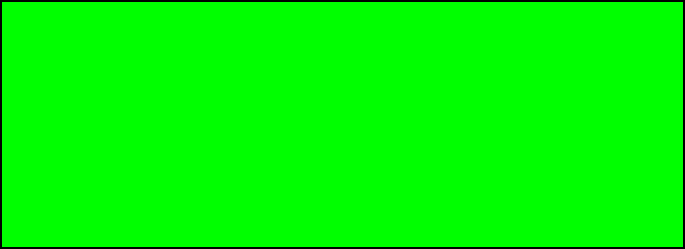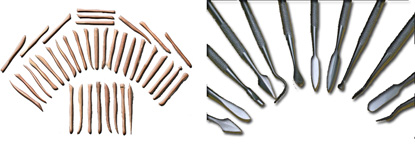Amy Sanders explains how she makes stamps, rollers, and texture plates, and how she
uses these to make richly textured slabs and what she refers to as stamp appliques.
Students will like the texture plates— using textured wallpaper, and making texture
plates will be like making their own textured wallpaper. She has a DVD available.
To make a model you need to know what materials and tools to use so lets start with
the products that are readily available :
Plasticine : Yes good old Plasticine, that stuff you used when you were a child,
is an excellent modelling material, it softens so it can be pressed stretched, flattened,
rolled, even pushed onto\into raised designs such as buttons, mouldings, textures,
in fact anything that has a surface you may want to reproduce and add to your own
particular work of art. It can be bought at any good retailer that sells children's
toys or art & craft shops, and is available in many different colours.
Plastilene : This is the professional version of Plasticine and is used by a lot
of modellers. It come in several different colour's which denotes the hardness and
flexibility of the product .This is available from specialist craft shops or resin
supply companies.
Clay : Probably the most common modelling material and my own particular favourite.
It can be bought from specialist pottery suppliers or if you know a pottery in your
area they might sell you a bag.
Plaster :Plaster is used mainly as a moulding material, its main attributes are that
it can be poured as a liquid that hardens and can be filed or shaped to suit your
purposes. Not generally used for making small models, but is used by sculptors on
larger projects that are built on chicken wire frames, or cloth that is dipped in
plaster and wrapped or built up to make larger sculptural shapes.
Wax : This is a very versatile medium as it can be melted to pour onto into moulds
or objects where it solidifies to a hardness when you are able to copy it in another
material e.g. : Plaster or metals. It can also be carved with special tools which
you heat on a small burner before applying to your model. Although ordinary candle
wax can be used, there are specialist waxes available from art & craft suppliers.
These include low melt wax, where the temperature to melt it to a liquid is so low
you are able to put a wet hand into it and by carefully withdrawing your hand from
the wax you can obtain a mould with lots of detail in it. You would then of course
pour another material into your mould such as plaster or resin to reproduce the hand
in solid form.
Rubber : There are a lot of different rubber compounds on the market at present most
of which are very expensive. Latex is probably the most well known and is generally
used by dipping the model into it several times to build up a thickness of rubber
that when dry can be peeled off and used as a mould. Plaster etc. is then poured
in this mould to reproduce your original.
Other types of rubber such as vynamold have to be heated in a double pan to make
them liquid.The one I use most often is a two part rubber called R-T.V where you
pour the quantity you need into a container and add a catalyst which causes the rubber
to solidify. With this product you can also put an additive into that allows you
to brush or trowel the rubber to vertical surfaces. This product is very expensive
and I only use it if very high detail is required in the finished piece. As you can
see there is a great variety of materials that you can use to make your model and
I would suggest that you try them all to determine which ones you feel will do the
job and best suited for the model you are trying to reproduce.





